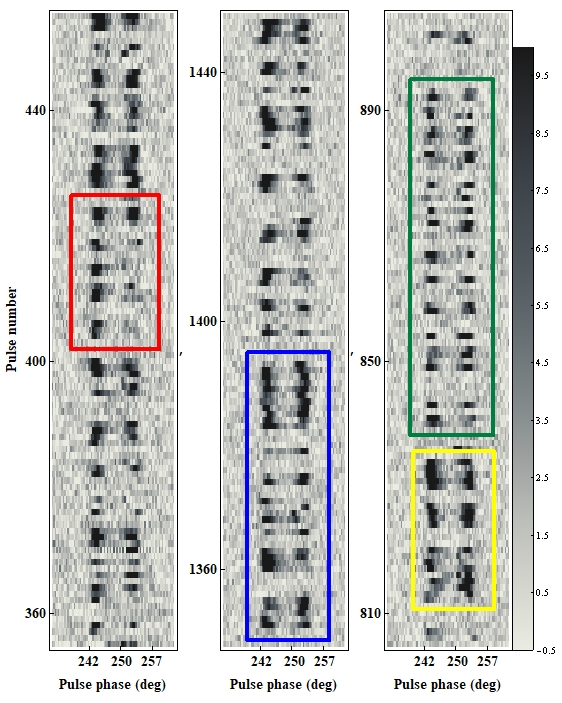

Unique emission properties in a long period CRAFT pulsar
Radio pulsars are well known for exceptionally regular emissions due to the stability of their rotation. However, large changes in the pulse shape and flux variations are detected at the individual pulses. A relatively long period pulsar PSR J1900+4221 with a rotational period of 4.34 s was discovered during the Commensal Radio Astronomy FAST Survey (CRAFTS) pilot scans.
Three sub-sequences of pulses show the emission variation in the leading and trailing components at different times.
Habtamu Menberu Tedila, a PhD student at the Xinjiang Astronomical Observatory (XAO) of the Chinese Academy of Sciences (CAS), together with his supervisors and collaborators, used data obtained from the Five-hundred-meter Aperture Spherical Radio Telescope (FAST) to carry out a single-pulse study of the emission from the pulsar.
The study was published in The Astrophysical Journal.
Using single-pulse energy analysis, the researchers investigated the emission variation in the leading and trailing components. The single-pulse sequence of this pulsar reveals different emission features such as nulling, weak, regular pulses, and occasional bright pulses.
The results show that emission from the two components is unique, and they exhibit a moderate correlation.
The researchers also found that the null fraction is about 22.2% ± 1.1% for this pulsar. Considering the long rotational period of the pulsar, such nulling value does not seem to show a strong correlation with its age or the rotation period.
In addition, the ‘movement’ of subpulses across the profile has also been detected in this pulsar, and the phenomenon is more diverse than other CRAFTS discovered pulsars.

Contact: Habtamu Menberu Tedila
Xinjiang Astronomical Observatory, Chinese Academy of Sciences.
Email: habta125@xao.ac.cn
Article link: https://doi.org/10.3847/1538-4357/ac5f42
Attachment Download: